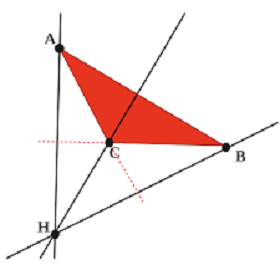



Superpowers in Comparison to Themselves
The United States have no absolute control over the international scenario, as had happened after the World War II until the demise of the Soviet Union. It is also true that, as has been rightly pointed out by Zygmunt Bauman, we now live in a liquid modern world where today’s superpowers are more streamlined than in the past by the raise of new powers like China, India, Brazil & others (1). Now everything is boiling, or does not seem to have secure horizons. However, experience shows that what is liquid turns usually into solid, and that sooner or later (that is to say, over the next ten or twenty years) the international political situation will have much more defined contours. A first step of the future world politics trend and solidification is the renewed presence of Russia on the international chessboard. President Putin really gives rise to a new scenario, where Russia is accommodated within the center of a new strategic alliance that inevitably one day will collide with that of the United States:
“Russia has regained its role as a major world power and thus showed that it [Russia] is not a negligible party in international affairs, but that it will have to be reckoned with in the future […] Today the […] US influence in Central Asia is associated again with Russia, China and Iran, three different countries, yet forming a real community of interests which represents 1.5 billion people, ” Alain de Benoist wrote (2).
Besides, he added that Americans are perfectly aware of the development of this particular scenario. In fact, since the early 1940s they knew and appreciated the geopolitical writings of Nicholas Spykman who pointed out that,
“The United States must recognize once again, and permanently, that the power constellation in Europe and Asia is of everlasting concern to her, both in time of war and in time of peace.” And Adam Garfinkle observed that “Spykman’s views were universally known and widely appreciated” in the United States (3). In this connection, Alain de Benoist firmly stressed:
“Who controls Eurasia, controls the world, Brzezinski said.”
So Russia’s pragmatic President, Vladimir Putin, is called on to measure himself against Donald Trump, an equally pragmatic man who (at least it seems to me) is perhaps more helpful than others in dealing with the issue of a new division of the liquid world in favor of both America and Russia. In Alexandros Petersen & Katinka Barysch’s work, the problems of the triangular relations among China, Russia and United States are posed as follows:
“From an energy perspective, the relationship between Russia and China should be straightforward. Russia is the world’s biggest hydrocarbon producer. China one of the world’s biggest and fastest growing energy market […] A long-term strategic energy relationship between the two looks not only commercially viable but almost inevitable.” (4)
Then Petersen and Barysch added:
“In the immediate post-Cold War period China took a passive approach to Central Asia, staying on the sidelines of the Russia-American struggle for influence in the region. More recently, however, with economic and energy considerations rising into to the fore and China more self-confident in its foreign policy, this has changed dramatically.”
Thus, both Russia and America will divide equally Central Asia among them for making their business, but China will play gooseberry. So, the Russia and the United States need to have a cordial relationship for effectively opposing the Chinese presence in Central Asia. But the problem is obviously open to many different interpretations and implications, while the issue has got confused in the light of the latest developments (the so called Trade War between China and the United States).
Notes
1) Zygmunt Bauman, 44 Letters From the Liquid Modern World. Cambridge, Polity Press, 2011, p. 1.
2) Alain de Banjoist, The End of the Present World: The Post-American Century and Beyond Conference. Speech. London, October 12, 2013.
3) Francis S. Sempa, “The Geopolitical Realism of Nicholas Spykman,” in Spykman, Nicholas J. America’s Strategy in World Politics. Brunswick, Transaction Publisher, 2008, pp. XXVIII, XXXII, and footnote 69
4) Katinka Barysch – Alexandros Petersen, Russia, China and the geopolitics of energy in Central Asia, London, The Centre for European Reform (CER), 2011, pp. 2, 39, 32, 42.
What is the Main Cause of a Heart Attack? What is its Solution? A heart attack is the blockage of… Read More
In the vast economic arena, one term that often takes center stage, inciting extensive debates and discussions, is the "debt… Read More
De-Dollarization: The Changing Face of Global Finance The financial landscape is in a state of flux, with an intriguing economic… Read More
The curtains closed on a dramatic Bundesliga season with Bayern Munich standing tall once again, clinching their 11th straight title.… Read More
The Unfolding Story of Celine Dion's Health In recent news that has left fans across the globe stunned, iconic singer… Read More
As the echoes of the recent NBA season start to fade, the attention of enthusiasts is firmly glued to one… Read More